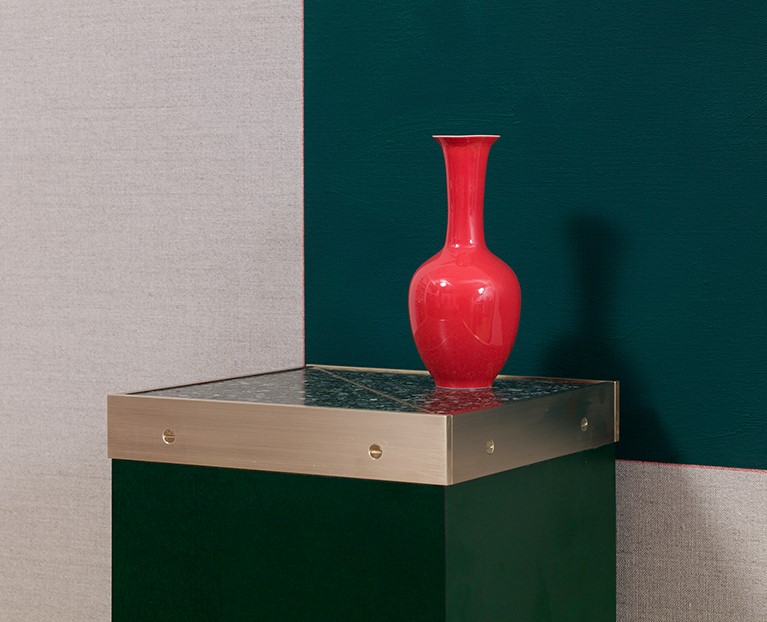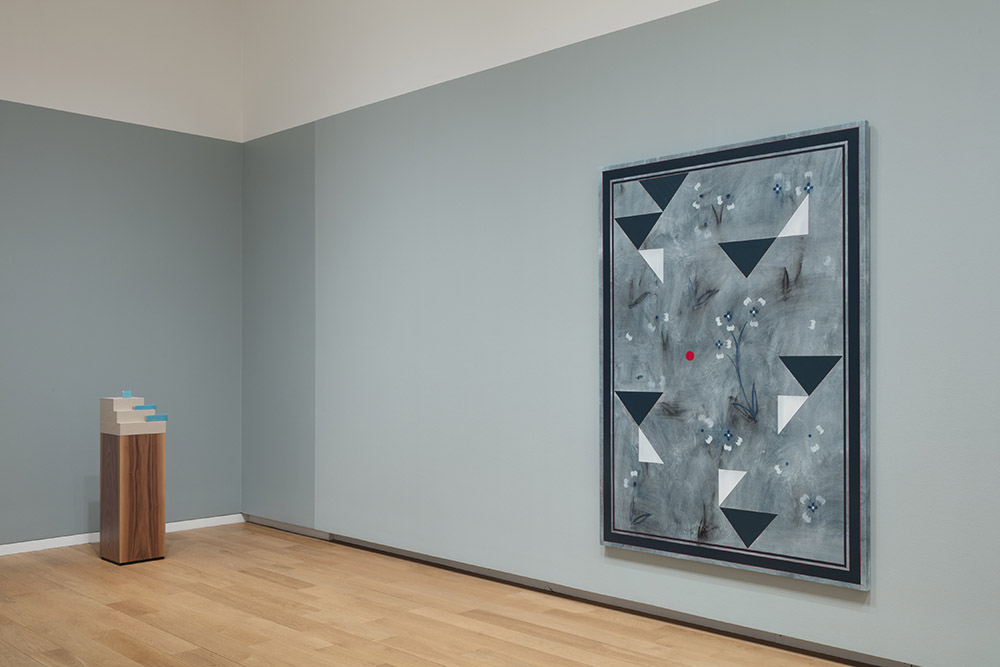ART CITIES:N.York-Kamrooz Aram
 Over the last few years, Kamrooz Aram’s paintings have sought to rehabilitate the status of ornament and pattern within modernist aesthetics. Challenging the epithet ‘decorative’, Aram uses ornament conceptually. His works often challenge a modernist disdain for decoration, shares his thoughts on ornament and its complex relationship to modernist painting and exhibition design as demonstrated in his own varied practice in which painting, collage, sculpture, and the art of display operate as equals.
Over the last few years, Kamrooz Aram’s paintings have sought to rehabilitate the status of ornament and pattern within modernist aesthetics. Challenging the epithet ‘decorative’, Aram uses ornament conceptually. His works often challenge a modernist disdain for decoration, shares his thoughts on ornament and its complex relationship to modernist painting and exhibition design as demonstrated in his own varied practice in which painting, collage, sculpture, and the art of display operate as equals.
By Efi Michalarou
Photo: FLAG Art Foundation Archive
Kamrooz Aram in his solo exhibition “An Object, A Gesture, A Décor” at the FLAG Art Foundation presents new and recent paintings, sculptural works, and collages, highlighting the complex position of ornament throughout the history of Modern art. Kamrooz Aram believes that ornament (and art in general) can have the power to transform trivial or indifferent’ architecture into emotional architecture. Kamrooz Aram explores the potential of pattern and ornament to function as an essential element in painting. In the Western history of Modernist Art, the ornamental was met with disdain. The architect Adolf Loos in his essay “Ornament and Crime” (1908), proposed that ornament was only acceptable for the non-Western cultures that he deemed to be inferior to modern Europeans. Nevertheless, since antiquity, for many cultures, ornament functioned as more than mere decoration and was employed as a meaningful, even conceptual, element in art and architecture. Aram’s paintings engage a process of building and destroying the image by layering patterns, geometric forms, delicate line, and heavy brushwork, resulting in complex compositions that appear to be in a state of flux. Aram appropriates curvilinear floral motifs from Persian carpets, exploring the ornamental potential in abstract painting, as well as the potential for expression in supposedly decorative patterns. In “Ornamental Composition for Social Spaces 7” (2018), Aram abstracts floral patterns into an all-over design that is neatly concealed under the modernist tropes of penciled grids and geometric shapes. Other paintings, such as “The Rumor Circuit” (2018), “Le Grand Jeu” (2017), and “Counterparade” (2018), utilize the same patterns, but abandon the technical precision of the grid for spontaneous compositions and uninhibited mark-making. The tension between ornament and abstraction is amplified in his sculptural works, which position ceramic objects on pedestals made of wood, brass, and terrazzo, placed in front of painted linen panels. “Blue Backdrop for Minor Arts” (2018), “Composition with Fragments”, (2017), and “Green Movement” (2018), evoke a museum sensibility, wherein linen-lined vitrines are commonly used in displays of antiquities. Geometric Abstraction and color field painting, hallmarks of modernism, function here as both the backdrop and framing devices for ceramics. The artist does not provide wall labels identifying the displayed objects, challenging the viewer to think beyond the typical analysis of cultural significance, authenticity, authorship and provenance. Using exhibition design as a unifying medium, Aram choreographs the flow of the gallery’s physical architecture through a progression of painted walls—a seemingly decorative maneuver and framing device that both articulates individual pieces in the exhibition and unites them under one overarching narrative. The full-gallery exhibition design expands this layering effect and extends the artist’s investigation of how display and context affect meaning.
Info: The FLAG Art Foundation, 545 West 25th Street, 10th Floor, New York, Duration: 27/10/19-19/18/19. Days & Hours: Wed-Sat 11:00-17:00, http://flagartfoundation.org


